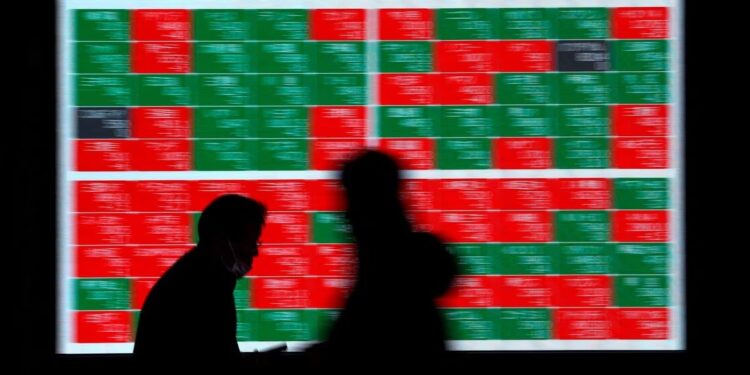Asia-Pacific stocks fell on Friday, slumping toward a second weekly loss as investors fretted about the potential for further Federal Reserve tightening and the effect on the U.S. economy.
U.S. short-term Treasury yields held near a one-month high, helping the dollar tick up against major peers, after Richmond Fed President Thomas Barkin overnight added to a chorus of hawkish central bank commentary in recent days.
MSCI’s broadest index of Asia-Pacific shares (.MIAP00000PUS) sank 0.54% and was on course for a 1% weekly decline, after losing 1.16% in the previous week.
Mainland Chinese blue chips (.CSI300) lost 0.41% and the Hang Seng (.HSI) tumbled 1.19%.
China’s January factory gate prices fell more than economists expected, suggesting that flashes of domestic demand that had stoked consumer prices after the zero-COVID policy ended are not yet strong enough to rekindle upstream sectors.
Australia’s benchmark (.AXJO) slid 0.56% and South Korea’s Kospi (.KS11) shed 0.49%.
Japan’s Nikkei (.N225) bucked the trend with a 0.5% rise, boosted by some strong earnings reports.
U.S. equity futures were flat, after the S&P 500 sank 0.88% overnight.
“Is inflation calming? That’s really the core question for this year,” Barkin said in a podcast on the Richmond Fed’s website, adding that he felt the decline so far had been “distorted” by some falling goods prices.
At the start of the week, investors had been cheered after Fed Chair Jerome Powell refrained from striking a more hawkish posture following after a much stronger than expected jobs report at the end of last week.
“Powell maintained a relatively dovish tone, and markets took that as a green light to rally, but pretty much 24 hours later we got a stream of extremely hawkish Fed speak,” said Tony Sycamore, a strategist at IG.
“If rates go past that five, five-and-a-quarter percent range that the Fed has previously indicated, markets are definitely not priced for that – absolutely not.”
Money markets currently see a peak in the current rate cycle around 5.15% in July.
The two-year Treasury yield eased slightly to around 4.48% in Tokyo, after touching the highest since Jan. 6 at 4.514% overnight. The 10-year yield edged down to around 3.67% after bumping around 3.96% mid-week, also the highest since Jan. 6.
The U.S. dollar index , which measures the greenback against six peers including the euro and yen, ticked up slightly to 103.28, sticking to the middle of its range this week. It touched 103.96 on Tuesday for the first time since Jan. 6 as well.
Meanwhile, crude oil prices dipped in early trade on Friday but were headed for a weekly gain with the market continuing to seesaw between fears of a recession hitting the United States and hopes for strong fuel demand recovery in China, the world’s top oil importer.
Brent crude futures fell 28 cents, or 0.3%, to $84.22 a barrel, while U.S. West Texas Intermediate (WTI) crude futures fell 35 cents, or 0.5%, to $77.71.
Source: Reuters

